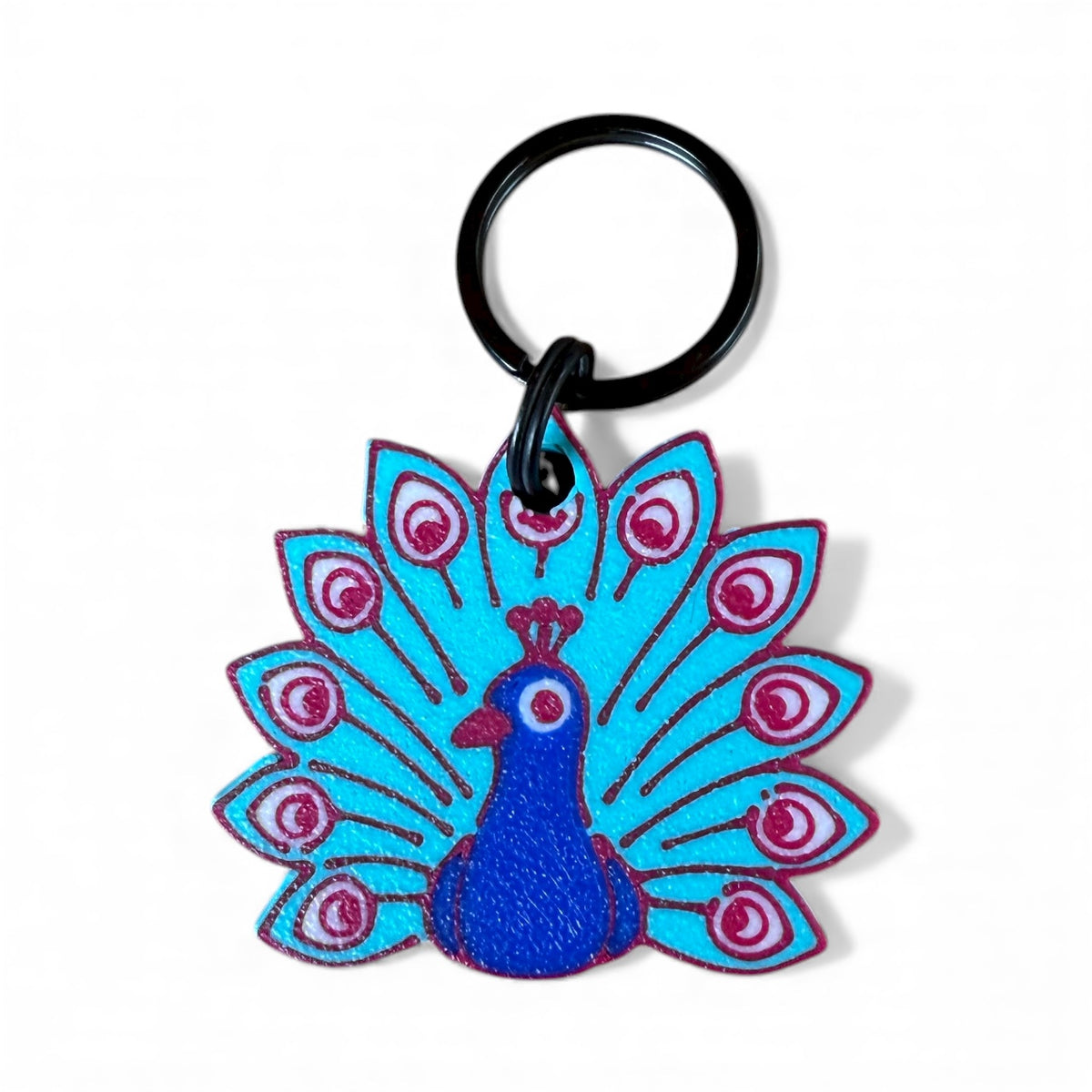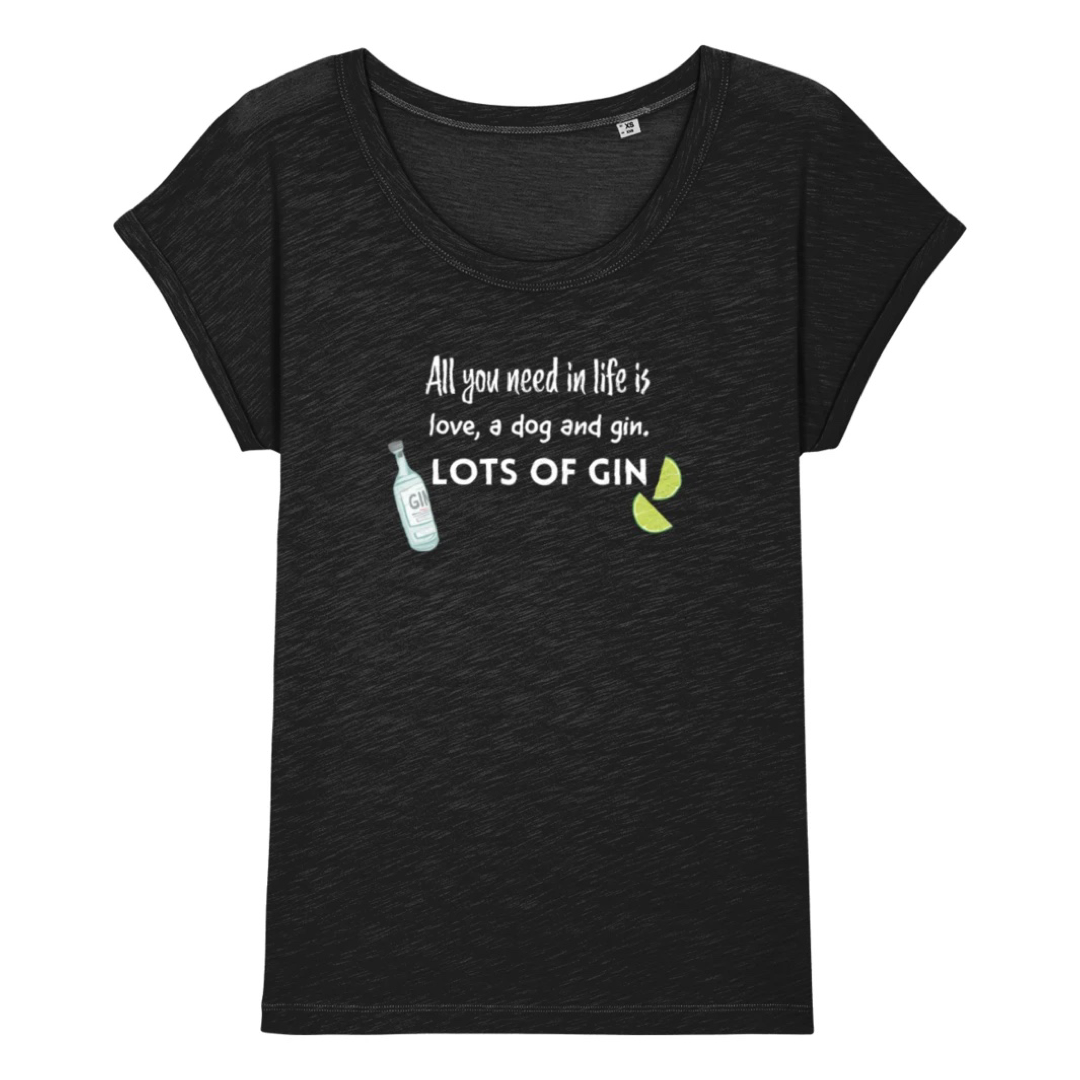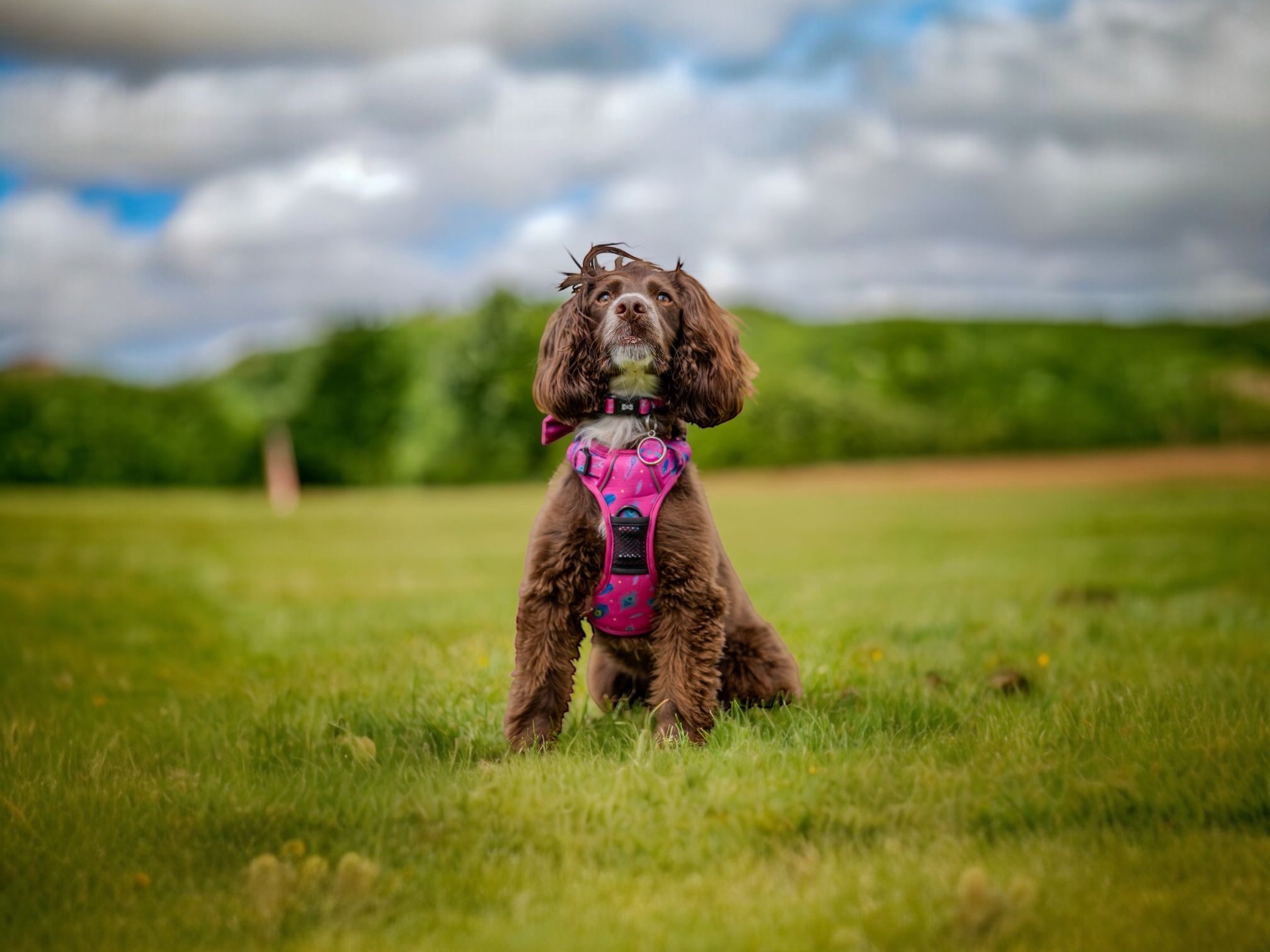Getting the right harness for your puppy can be the difference between tears and tail wags on a walk. Incredibly, puppies can outgrow a harness size in as little as four weeks, catching many owners off guard. Most people think choosing the cutest design is what matters, but comfort and correct fit are what keep your dog safe and happy every time you head out the door.
Table of Contents
Quick Summary
| Takeaway | Explanation |
| Measure your puppy correctly for a harness | Use a soft tape measure around the broadest part of their chest to ensure a proper fit. |
| Regularly check harness fit as your puppy grows | Puppies grow quickly; reassess harness fit every month to maintain comfort and safety. |
| Observe your puppy for signs of discomfort | Look for chafing, restricted movement, or escape attempts to evaluate harness fit. |
| Choose a harness suitable for your walking environment | Urban areas require reflective designs, while rural settings need robust buckles and handles for safety. |
| Train your puppy to accept the harness positively | Use treats and praise to create a positive association, making harness fitting a stress-free experience. |
Choosing the Right Dog Harness Size
Finding the perfect dog harness is more than just a fashion statement. It’s about ensuring your puppy’s comfort, safety, and freedom of movement. A poorly fitted harness can cause discomfort, restrict natural movement, and potentially lead to injury.
Understanding Harness Measurements
Measuring your dog for the right harness requires precision and patience. According to PubMed research, harness design significantly impacts canine locomotion, making accurate sizing crucial. Start by measuring your dog’s chest circumference, the most critical dimension. Use a soft measuring tape, wrapping it around the broadest part of your dog’s chest, just behind the front legs. Ensure the tape is snug but not tight, allowing two fingers to slip comfortably underneath.
Breed size matters immensely. Smaller breeds like Chihuahuas and Yorkshire Terriers need different harness specifications compared to larger breeds such as Labradors or German Shepherds. Puppies also require special consideration, as they grow rapidly and need adjustable harnesses that can accommodate their changing body shape.
Assessing Proper Fit and Comfort
Research in the journal Animals highlights the importance of harness fit beyond mere measurements. A well-fitted harness should allow complete range of motion without chafing or pinching. Check for these key indicators:
-
Mobility: Your dog should move freely without the harness restricting shoulder or elbow movement
-
Comfort: No visible rubbing or pressure points around chest and shoulders
-
Security: The harness should not slip over the dog’s head or rotate when walking
If the harness is too loose, your dog might slip out during walks. Conversely, a harness that’s too tight can cause skin irritation, restrict breathing, and limit natural movement. Most harnesses come with adjustable straps to help achieve the perfect fit.
Remember that puppy sizes change quickly. What fits perfectly at eight weeks might be too small by twelve weeks. Regularly reassess your puppy’s harness fit, checking measurements every month during their rapid growth phase. Look for harnesses with multiple adjustment points to accommodate your growing companion.
When trying on a new harness, observe your puppy’s reaction. A comfortable harness should not cause distress, pulling, or attempts to remove it. Watch for signs of discomfort like excessive scratching, reluctance to move, or changes in walking pattern. These could indicate that the harness needs adjustment or replacement.
Pro tip: Always purchase harnesses from reputable manufacturers that provide detailed sizing charts. Some brands offer breed-specific sizing guides that can help you select the most appropriate option for your puppy’s specific body shape and size.
Choosing the right dog harness is an investment in your puppy’s comfort and well-being. Take your time, measure carefully, and prioritize your dog’s natural movement and comfort above all else.
Step-by-Step Dog Harness Fitting Instructions
Putting on a dog harness might seem straightforward, but getting it right requires attention to detail and patience. According to the ASPCA, proper harness fitting is crucial for your dog’s comfort and safety, with a key recommendation of ensuring two fingers can comfortably fit between the harness and your dog’s body.
Preparation and Initial Steps
Before attempting to fit the harness, create a calm environment. Choose a time when your puppy is relaxed and slightly tired, preferably after a short play session or walk. Have treats ready to make the experience positive and rewarding. Spread the harness out and let your puppy investigate it first, allowing them to sniff and become familiar with the new item.
Identify the harness style you have. Step-in harnesses differ from over-the-head designs, and each requires a slightly different approach. Check all buckles and adjustable straps are functioning correctly before beginning. Ensure you understand which part goes where by laying the harness out and visualizing how it will sit on your dog.
Putting on the Harness
For a step-in harness, lay the harness flat on the ground and guide your puppy to step into the designated leg holes. Gently lift the sides up around their body and fasten the buckles. With an over-the-head harness, first slip it over your puppy’s head, then guide their front legs through the designated openings and secure the chest and belly straps.
A critical moment comes with the first adjustment. Looseness is key. As recommended by canine experts, you want the harness snug enough to prevent escape but loose enough to allow full movement. The classic two-finger test works perfectly here. After fastening the harness, slide two fingers between the harness and your puppy’s body. If they move comfortably and the fingers slide easily, you’ve achieved the right fit.
Fine-Tuning and Comfort Checks
Once the harness is on, observe your puppy’s reaction closely. A well-fitted harness should not cause any visible distress. Watch how they walk, sit, and move. Signs of a poor fit include:
-
Chafing or Rubbing: Red marks or hair loss around harness contact points
-
Restricted Movement: Hesitation to walk or unusual gait
-
Escape Attempts: Persistent trying to remove or wriggle out of the harness
Adjust the straps incrementally. Most quality harnesses have multiple adjustment points on chest and belly straps. Make small tweaks, checking your puppy’s comfort and mobility after each adjustment. Remember that puppies grow quickly, so what fits perfectly today might need readjustment in a few weeks.
Practice putting on the harness multiple times to help your puppy become comfortable with the process. Keep sessions short, positive, and reward-focused. Some puppies might take several attempts to become fully comfortable with a new harness.
A perfectly fitted harness transforms walking from a potential struggle to an enjoyable experience for both you and your puppy. Take your time, be patient, and prioritize your furry friend’s comfort throughout the fitting process.
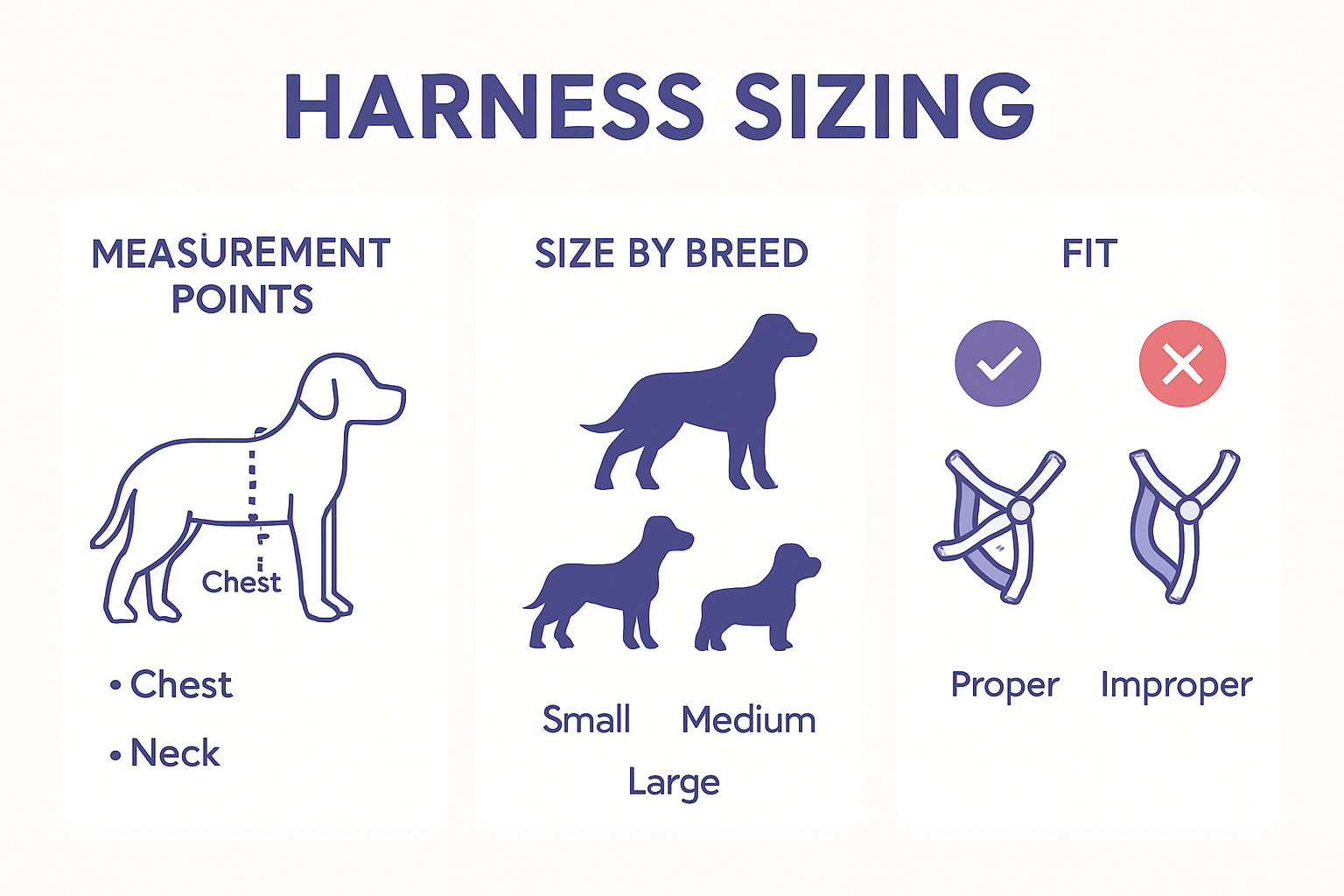
To help readers follow the essential fitting process, here’s a table summarising the key steps in properly fitting a dog harness for a puppy:
| Step | Action | Purpose |
| 1 | Prepare a calm environment; gather treats | Reduce stress and create positive association |
| 2 | Let puppy investigate the harness | Increase familiarity and comfort |
| 3 | Identify harness style and check buckles/straps | Ensure a correct and safe fit |
| 4 | Position harness on puppy (step-in or over-the-head) | Appropriate placement for design |
| 5 | Fasten buckles and chest/belly straps | Secure harness onto puppy |
| 6 | Perform two-finger looseness test | Confirm proper snugness without being tight |
| 7 | Observe puppy’s movement and check for discomfort | Detect fitting issues for adjustment |
| 8 | Adjust straps incrementally | Achieve optimal fit as needed |
Common Mistakes and Fixes for Puppy Owners
Navigating the world of dog harnesses can be challenging for new puppy owners. According to the American Kennel Club, incorrect harness fitting can lead to significant physical and behavioral issues in dogs, making it crucial to understand and avoid common pitfalls.
Sizing and Fit Errors
One of the most frequent mistakes puppy owners make is selecting a harness based on breed or age alone. Dogs, even within the same breed, can have vastly different body shapes and sizes. K9 Trail Time emphasizes that proper neck and girth measurements are essential for finding the right fit.
Many owners choose harnesses that are either too loose or too tight. A loose harness becomes a safety hazard, allowing your puppy to slip out during walks. Conversely, an overly tight harness can restrict breathing, limit movement, and cause significant discomfort. The two-finger rule is your best guide for checking harness fit. You should be able to comfortably slide two fingers between the harness and your puppy’s body.
Movement and Comfort Challenges
Puppies are constantly growing, which means their harness requirements change rapidly. What fits perfectly one month might be uncomfortably tight the next. The RSPCA South Australia recommends regularly checking and adjusting the harness to accommodate your puppy’s changing body.
Watch for these warning signs of an improper harness:
-
Chafing: Red marks or hair loss around harness contact points
-
Restricted Movement: Reluctance to walk or unusual gait
-
Breathing Difficulties: Gasping or unusual breathing patterns
-
Escape Attempts: Persistent trying to remove or wriggle out of the harness
Dr. Chris Zink, a canine sports medicine expert, warns that an ill-fitting harness can cause overuse soft tissue injuries due to abnormal pressures or compensatory muscle movements. This highlights the importance of not just finding the right size, but ensuring the harness allows natural movement.
Practical Solutions and Prevention
Preventing harness-related issues requires a proactive approach. Start by investing in adjustable harnesses with multiple attachment points. These provide flexibility as your puppy grows and allows for precise fitting. Look for harnesses with padded straps to reduce friction and increase comfort.
Consider your puppy’s specific needs. Some breeds have unique body shapes that require specialized harness designs. Brachycephalic breeds like Pugs, for instance, need harnesses that don’t put pressure on their already sensitive respiratory systems.
Make harness fitting a positive experience. Use treats and gentle praise during fitting sessions. If your puppy shows signs of stress or discomfort, take a break and try again later. Patience is key in helping your puppy become comfortable with their new walking gear.
Regular maintenance is crucial. Inspect the harness for signs of wear, check the fit monthly, and be prepared to replace it as your puppy grows. A well-maintained, properly fitted harness not only ensures your puppy’s safety but also makes walking an enjoyable experience for both of you.
Remember, every puppy is unique. What works for one might not work for another. Stay observant, be willing to make adjustments, and prioritize your puppy’s comfort and safety above all else.
To help puppy owners quickly spot fitting mistakes, here’s a checklist of common warning signs and their meanings:
| Warning Sign | Possible Cause | Action Needed |
| Chafing/red marks | Harness too tight or rubbing | Loosen/adjust straps, check for proper padding |
| Restricted movement | Poor harness positioning or over-tight straps | Re-adjust harness for freedom of movement |
| Breathing difficulties | Harness compressing chest/neck | Loosen straps; select size/shape better suited to breed |
| Escape attempts | Harness too loose or uncomfortable | Tighten straps, refit harness, try another style |
| Reluctance to walk | Discomfort, pinching, improper fit | Re-check fitting and try gradually acclimating |
Harness Safety Tips for UK Dog Walks
Ensuring your puppy’s safety during walks requires more than just a well-fitted harness. In the United Kingdom, where urban and rural walking environments can vary dramatically, understanding comprehensive safety strategies is crucial for responsible dog ownership.
Urban Walking Precautions
Navigating busy UK streets demands heightened awareness and specific safety considerations. Always choose a harness with reflective elements for increased visibility during darker mornings and evenings, which are common in the British climate. The Royal Society for the Prevention of Accidents (RoSPA) recommends using high-visibility gear to ensure drivers can see both you and your dog, particularly during low-light conditions.
When walking in crowded areas like city centres or busy pavements, opt for a harness with a front attachment point. This design provides better control and reduces pulling, which is especially important in environments with potential distractions like other dogs, cyclists, or pedestrians. A front-clip harness helps redirect your puppy’s attention back to you, making urban walks safer and more manageable.
Rural and Park Walking Safety
British countryside and park environments present unique challenges for dog walking. The Kennel Club UK advises using a harness that allows quick and secure control, particularly when encountering wildlife, livestock, or unpredictable terrain.
Choose a harness with robust, secure buckles that won’t accidentally release during active movement. Look for features like:
-
Durable Materials: Waterproof and mud-resistant fabrics suitable for British weather
-
Strong D-rings: Allowing secure leash attachment in varying environments
-
Padded Straps: Preventing chafing during longer walks across uneven terrain
Additionally, consider a harness with integrated handle systems. These provide an extra point of control when navigating challenging landscapes or quickly securing your dog near potential hazards like roads or wildlife.
Emergency Preparedness and Training
Beyond physical equipment, safety involves comprehensive training and preparation. Invest time in teaching your puppy reliable recall and loose leash walking techniques. A well-fitted harness should complement your training, not replace it.
Always carry essential safety items during walks, including:
-
Identification Tags: Ensure your dog’s harness has secure attachment points for ID
-
First Aid Kit: Include basic canine first aid supplies
-
Water and Portable Bowl: Especially important during longer walks
-
Mobile Phone: For emergency contact if needed
Regularly inspect your harness for signs of wear, checking buckles, straps, and attachment points. British weather can be harsh on outdoor equipment, so monthly assessments are crucial. Replace the harness immediately if you notice any structural weakening or damage.
Remember that each walk is an opportunity to reinforce safety habits. Stay alert, maintain control, and prioritize both your puppy’s physical safety and emotional well-being. A thoughtful approach to harness selection and usage transforms walks from simple exercise to bonding experiences that keep your furry friend secure and happy.
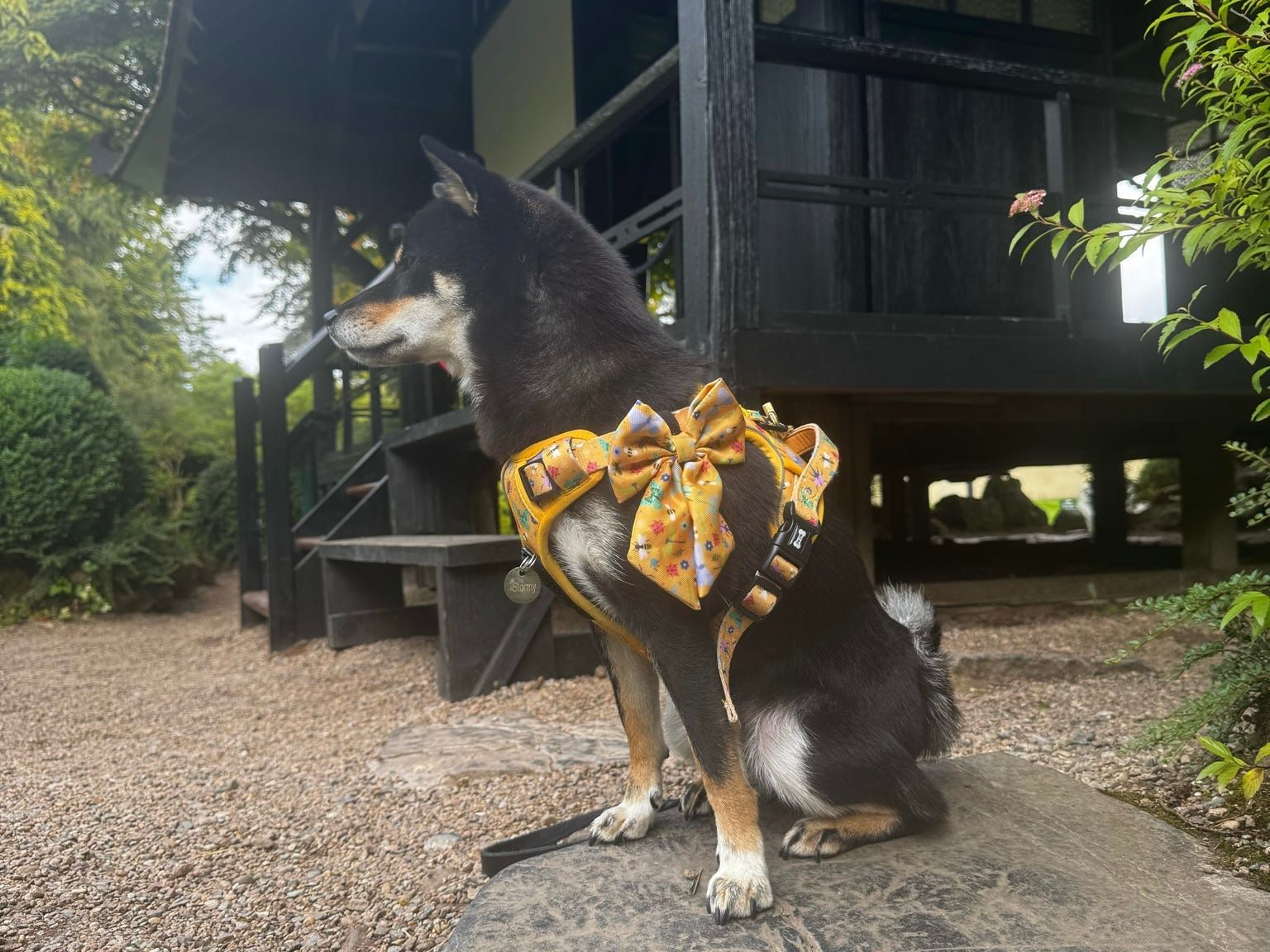
Frequently Asked Questions
How do I measure my puppy for a harness?
To measure your puppy for a harness, use a soft measuring tape around the broadest part of their chest, just behind the front legs. Ensure the tape is snug but allows two fingers to fit comfortably underneath.
What are the signs that a dog harness is not fitting properly?
Signs of a poorly fitting harness include chafing or red marks on the skin, restricted movement, escape attempts, or excessive scratching. If your puppy shows any of these signs, it may be necessary to readjust the harness or find a different size.
How often should I check my puppy’s harness fit?
Puppies grow rapidly, so it’s advisable to check your puppy’s harness fit at least once a month. Regular adjustments may be necessary to ensure ongoing comfort and safety as your puppy grows.
What is the two-finger rule for fitting a harness?
The two-finger rule for fitting a harness states that after fastening the harness, you should be able to comfortably slide two fingers between the harness and your puppy’s body. This ensures the harness is snug enough to prevent escape but not so tight that it restricts movement or breathing.
Give Your Puppy the Comfort and Style They Deserve
Is your puppy outgrowing harnesses faster than you can keep up? Struggling to find a safe fit as they wriggle and grow? You have just learned how quickly puppies change and how crucial proper harness fitting is for their comfort and happiness. At Pup Chic Boutique, we understand the challenges dog mums face. Our collection is filled with adjustable, no-pull harnesses designed for growing pups, all made with soft materials to prevent chafing and crafted to allow full movement. Choose from bold styles and practical designs that put your puppy’s wellbeing first, just like you do.
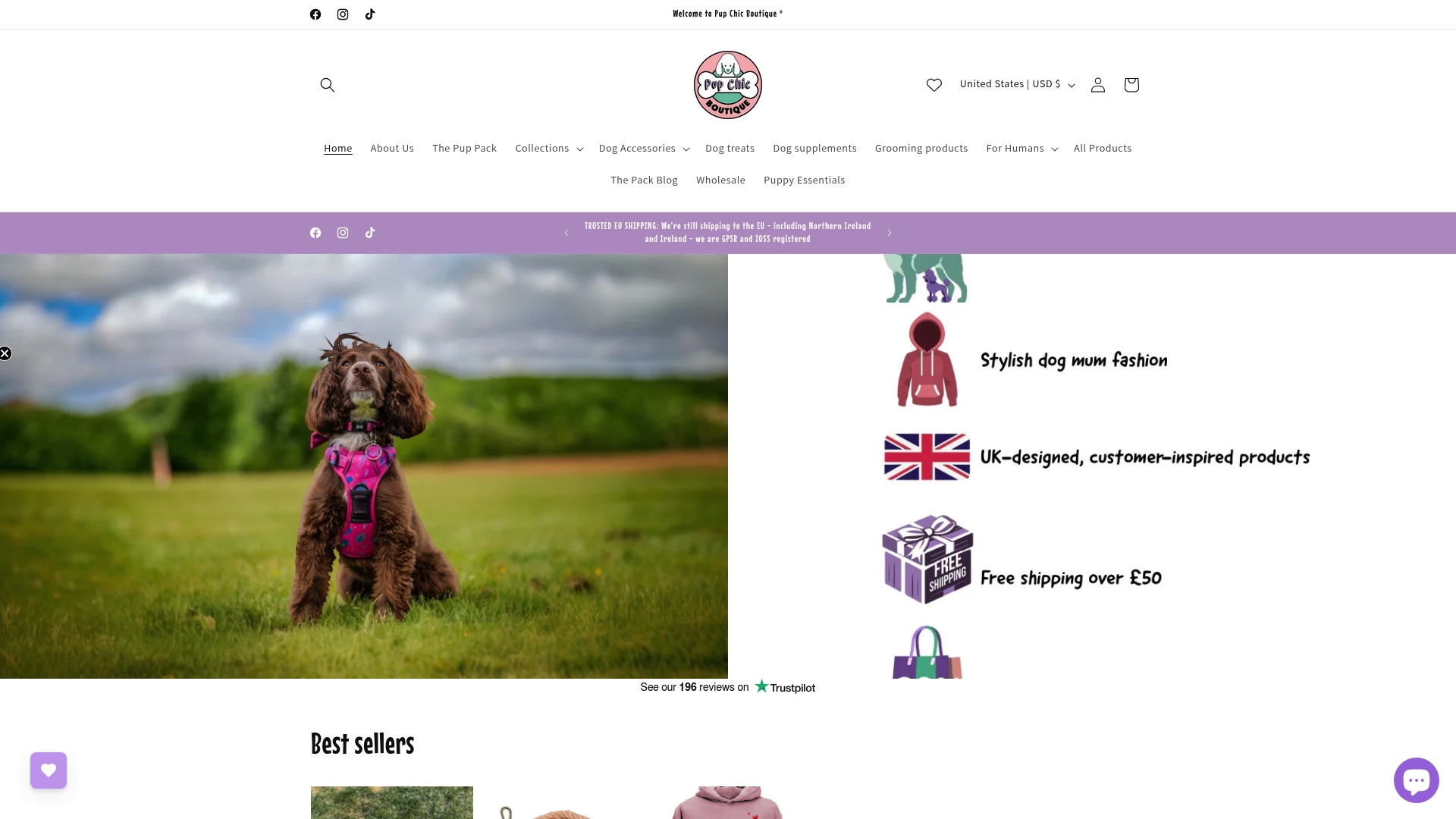
No more rough straps, guesswork, or outgrown accessories. With Pup Chic Boutique, your puppy will enjoy comfort with every walk and you can shop knowing each item is inspired by real feedback from dog owners like you. Explore our UK-designed range today and give your puppy a harness they are happy to grow into. Shop the collection now at Pup Chic Boutique’s online store for the perfect fit and style.
